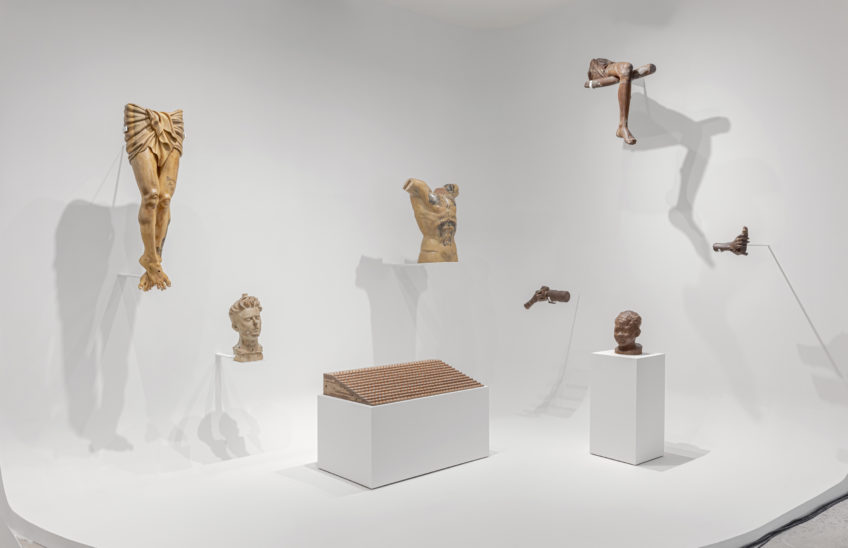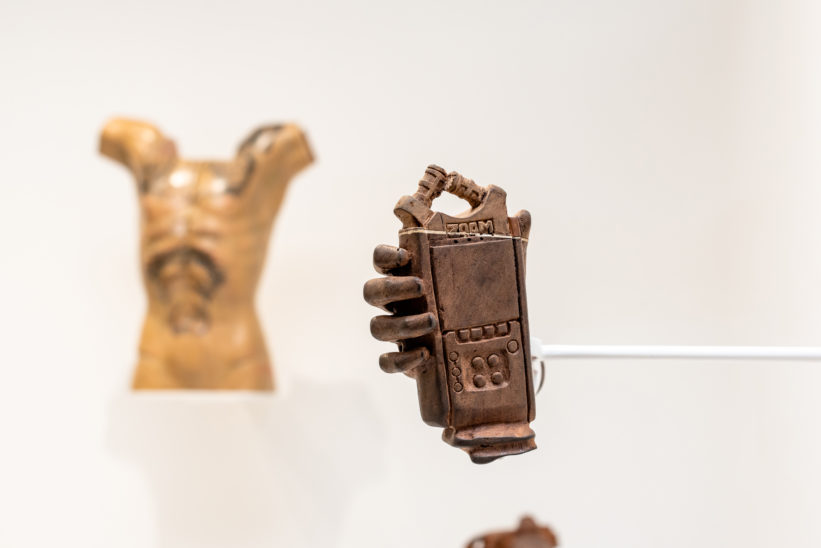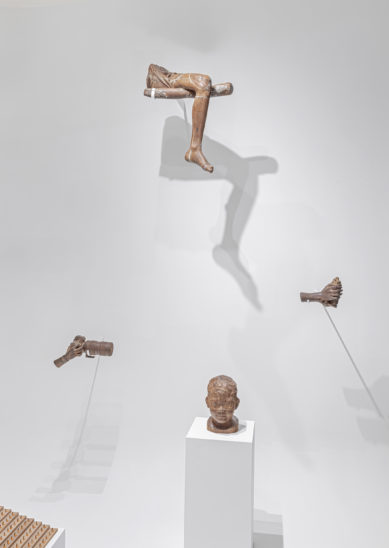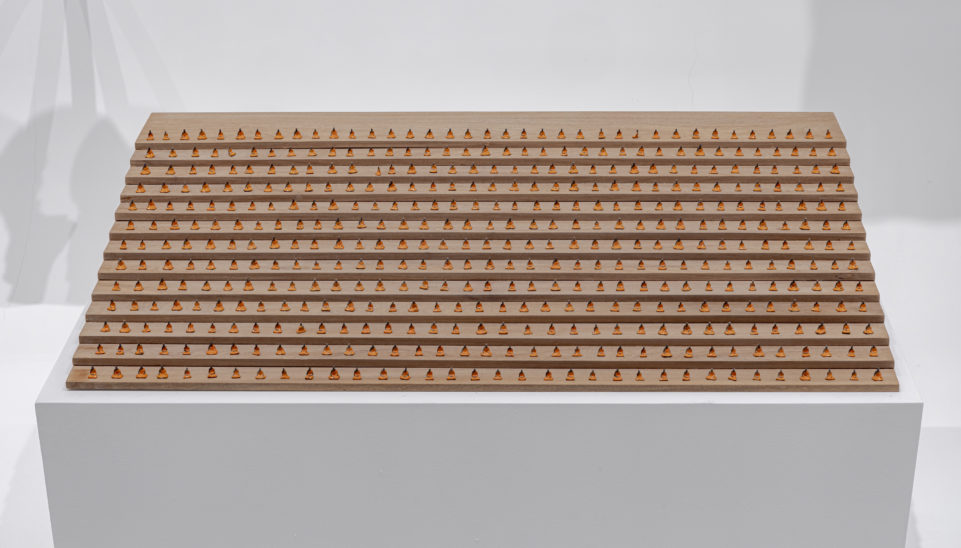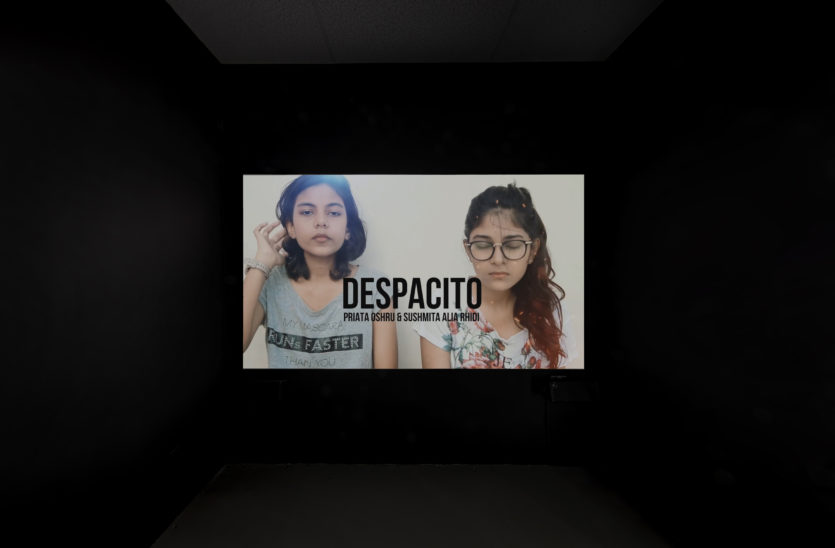Paul Pfeiffer’s Incarnator (2018–2022) is a multimedia body of work that explores the belief systems surrounding the encarnadores, sculptors revered in the Philippines for their ability to create uncanny life-like representations of Catholic icons. Encarnadores are skilled in encarnacion-style of woodworking, which originated in the 16th century in Seville and was introduced to the Philippines by Spanish missionaries. The process involves carving and drying wood for six months before applying multiple layers of polychromatic paint and varnish, and sanding the surface repeatedly until the figure appears to glow from within. Encarnacion sculptures are extremely prized and are themselves fetishized objects of pious devotion, populating churches across the Philippines, which has the largest Christian population in Asia.
Perhaps the most famous encarnacion sculpture in the Philippines is the Santo Niño de Cebú, a naturalistic representation of the Christ Child dressed as a Spanish monarch. This figure of a child king, conflating the symbols of the godhead and empirical power, was brought to the Philippines in 1521 by the Portuguese-born, Spanish explorer Ferdinand Magellan and given as a gift to Rajah Humabon , the ruler of Cebu, one of the main islands and polities in the Philippine archipelago. The Santo Nino was given to commemorate the baptism and Catholic conversion of Humabon, his wife Humani, and eight hundred Cebuanos. Today, the Santo Nino de Cebu, believed to be miraculous, is the centre of the largest festival in the Philippines, known as Sinulog, in which hundreds of thousands of people celebrate the Christ Child in communal devotion.
For Incarnator, Paul worked with several Filipino encarnadores, including Willy Layug of Betis Pampanga, who is perhaps the most well-known and who trained in Seville to perfect the woodworking technique. The central thread of the series are realistic carvings of the Canadian pop star Justin Bieber, whose near-naked body, complete with highly-detailed tattoos, has been broken-up into composite body parts. The encarnadores’ talent for representing modern heroes of mass worship is applied here to a celebrity who has billions of fans around the world, and whose own conversion to evangelical Christianity is well documented. Justin is a “child-king,” an emblem of both innocence and worldly knowledge. Represented here as a series of relics–the mortal remains of saints–the work opens-up consideration of christianity, colonialism, and capitalism as entangled belief systems that continue to hold sway over billions of people through the spectacle and performance of faith.
Alongside these encarnacion sculptures are busts of the encarnadores’ own children, roughly hewn, as if suspended in a state of becoming, which have been digitally scanned and produced by a 3D printer. Meanwhile, in a back room, is screened a short video comprised of collaged footage of the encarnadores at work, a live Justin Bieber concert in Mexico, rice paddy farmers in the Philippines, Buddhist meditation DVDs, and kids from various countries singing along to Justin’s remix of Luis Fonsi’s Despacito posted on social media. Paul’s video explores mimicry–whether as popular fandom, sculpture, photography, videography, or digital image capture–as an act of devotion, and the ways by which beliefs, which control how one views oneself and the world, spread like wild-fire across an expanding mediated landscape.
Made possible with the generous support of carlier | gebauer.
Audio Didactic:
Bio
Paul Pfeiffer (born in 1966, Honolulu, USA) is known for his inventive manipulation of digital media. He recasts the visual language of pop spectacle to explore the role of images in shaping individual and collective consciousness. Paul uses a range of found materials and sources to plumb the depths of contemporary culture, assessing its racial, religious and technological dimensions. Paul’s objects and images function diachronically, establishing profound genealogies connecting contemporary culture and its many particularities to the long, seemingly remote histories of art, religion, nationhood and diaspora.
Exhibition Site
72 Perth Avenue
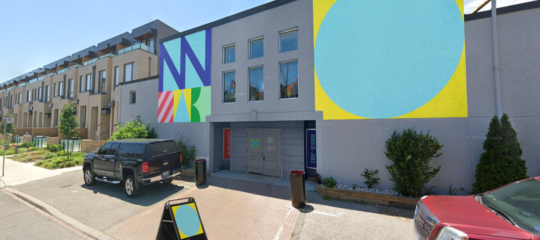
72 Perth Ave
Toronto ON
M6R 2C2

